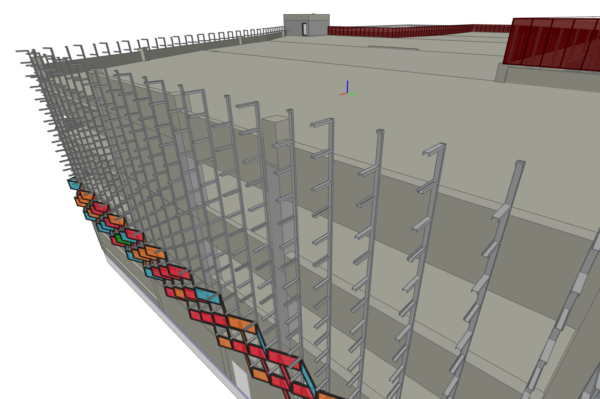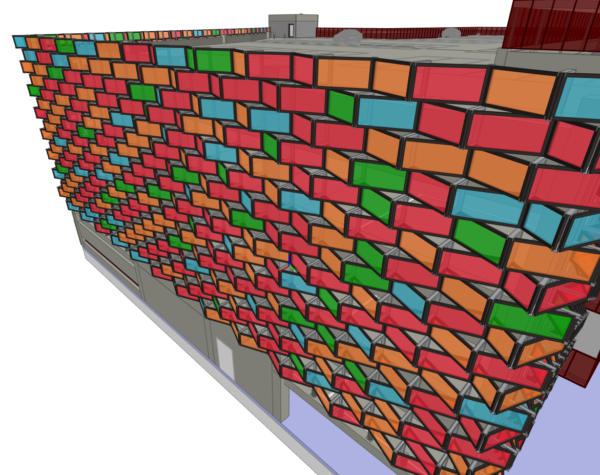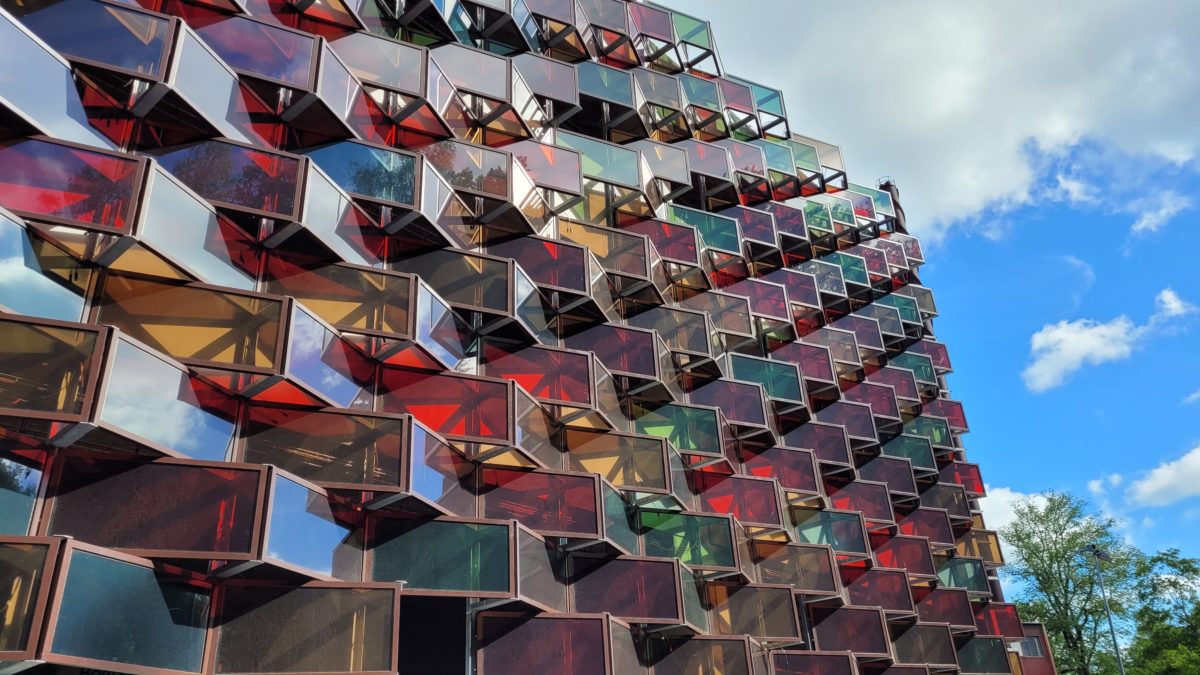Soltech Energy, a Swedish PV system integrator and solar product supplier, is building several PV facades in its home market. It recently installed a 60 kW solar facade on a newly built garage with 300 EV–charging posts in Gothenburg by adopting a special design it has developed for buildings with particular airflow patterns.
The flow of air in the garage is important because of exhaust from the vehicles. The facade is open so the air exchange does not need to be measured, as it is far beyond the required levels for garages, according to the company. It also claims that the air flow is beneficial for the temperature of the panels.
“The facade is being built with semi-transparent modules that requires a certain tilt angle and, at the same time, it is placed on a building wall that needs a high exchange of airflow between its inner and outer parts,” the company's chief innovation officer, Anna Svensson, told pv magazine. “For these reasons, we decided to use a prefabricated, 11-meter hot-dipped galvanized steel construction built by our unit Fasadsystem, which allows the deployment of the panels with the required tilt angle before the structure is attached to the wall, and also the necessary air passages for the garage walls through interstices present between the horizontal rows of panels.“

Image: Liljewall arkitekter
This structure and module configuration, according to Svensson, facilitate easy, high-quality, fast installations, as it only took about a month and a half to install and put the garage project into operation. It also ensures that, from approximately 2 meters away, only the color of the solar panels is visible, although thin black lines are also visible from close up.
“The glass is not chromatic and the thin black lines are the solar substrate but you only see them standing at a distance lower than two meters and if you are further away you only see one color on the entire panel,” Svensson explained. “The technique to create the visual impact is very old for normal patterns and is called ‘raster graphics'.”
Svensson said that the client, Swedish property company Wallenstam, wanted the area to be inspired by patterns and colors of Swedish designer Viola Gråsten, who helped popularize brightly colored rya pile carpets in the 1950s. Raster graphics are digital images created with tiny rectangular pixels arranged in a grid formation. They are usually built with chromatic gradations, different lines and shapes, and complex compositions.

Image: Liljewall arkitekter
The grid-connected solar facade supplies electricity for the garage, which features approximately 300 charging boxes for electric cars. The system includes 1,096 semi-transparent glass-glass frameless panels with 40% transparency and a power output of 54 kW. Chinese manufacturer Advanced Solar Power supplied the modules. The modules measure 1,200 mm x 600 mm x 6.8 mm and weigh 11.8 kg, with a total surface of 0.72 square meters. The thin-film cadmium telluride (CdTe) solar panels are available in red, blue, orange, and green.
Svensson said the PV facade concept can be compared to any decor facade. “You can have it at a garage as an open facade, but you can also have it on a building as a decor facade and then add a closed facade behind,” she said.
*The article was updated on August 18 to reflect that the PV facade has a capacity of 60 kW.
This content is protected by copyright and may not be reused. If you want to cooperate with us and would like to reuse some of our content, please contact: editors@pv-magazine.com.




4 comments
By submitting this form you agree to pv magazine using your data for the purposes of publishing your comment.
Your personal data will only be disclosed or otherwise transmitted to third parties for the purposes of spam filtering or if this is necessary for technical maintenance of the website. Any other transfer to third parties will not take place unless this is justified on the basis of applicable data protection regulations or if pv magazine is legally obliged to do so.
You may revoke this consent at any time with effect for the future, in which case your personal data will be deleted immediately. Otherwise, your data will be deleted if pv magazine has processed your request or the purpose of data storage is fulfilled.
Further information on data privacy can be found in our Data Protection Policy.